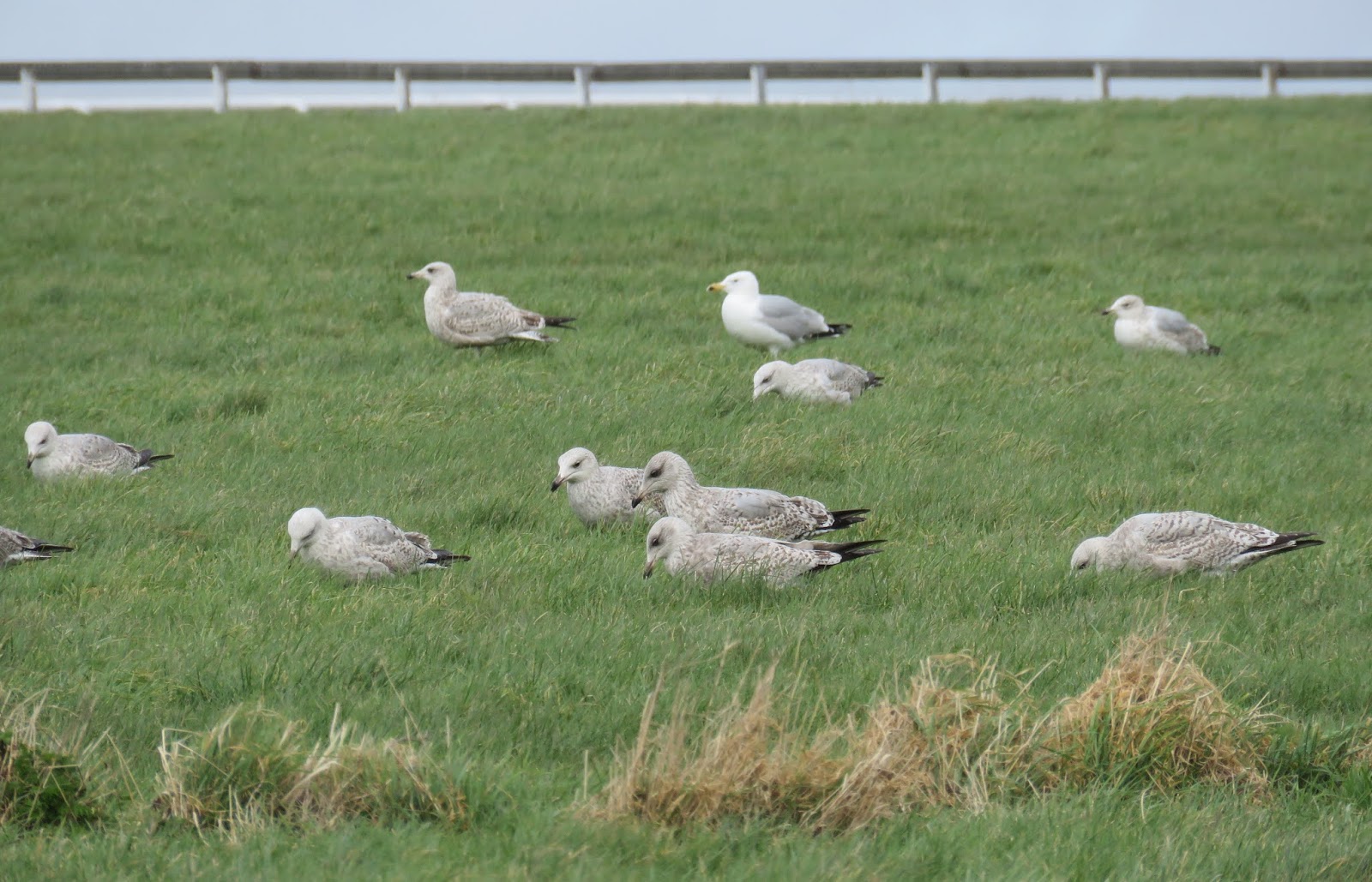At the moment my birding time is not, in my opinion, being fairly rewarded, beyond that of being able to see the totally expected. In an ideal world that wouldn't matter, as it should be enough just to be out in the open and accept whatever comes along. However, currently that doesn't work for the ‘spoilt brat’ within me, and I am starting to think that the birding Gods are not on my side. So I plod on, waiting for that eureka moment that is surely getting closer! Almost an all-dayer today, split between Epsom Downs and Canons Farm, both sites unrewarding. With a few Mediterranean Gulls being picked up across the county I was on high alert, but few 'smaller' gulls were on show. Apart from a group of Herring Gulls on the race course, most were high and overhead. It is always worth checking anything on the deck here, but nothing warranted a second look. The picture above has, in the foreground, one of the hummocky-strips that contours the race course on the southern flan...







